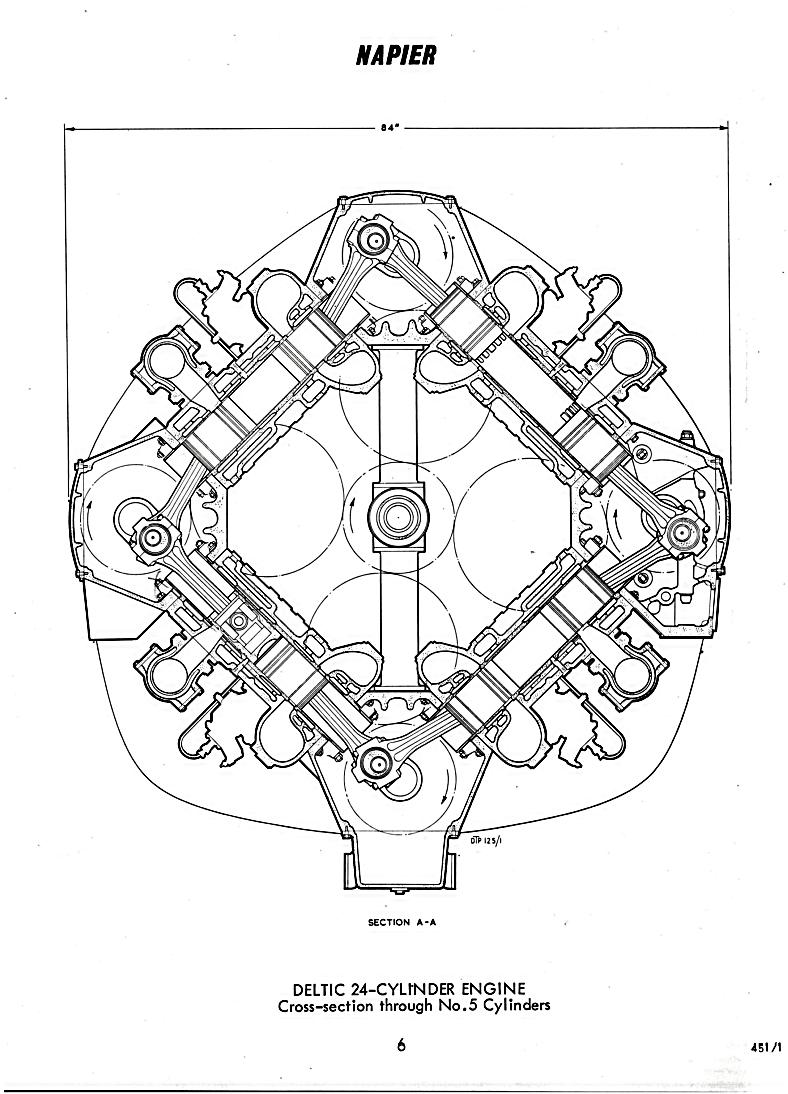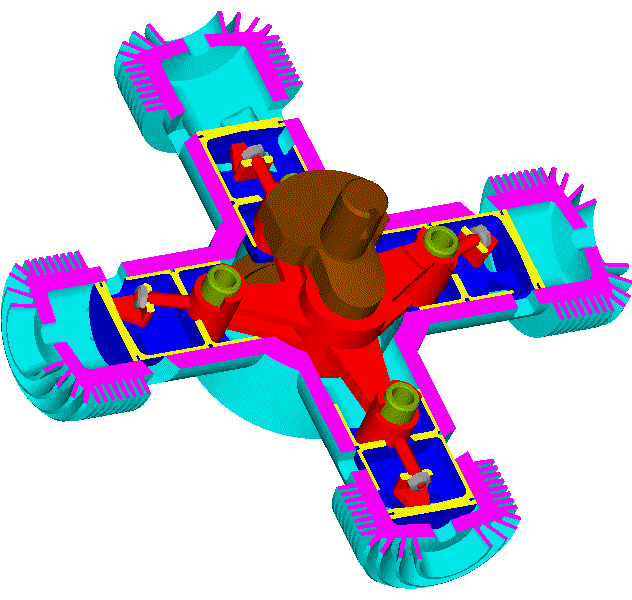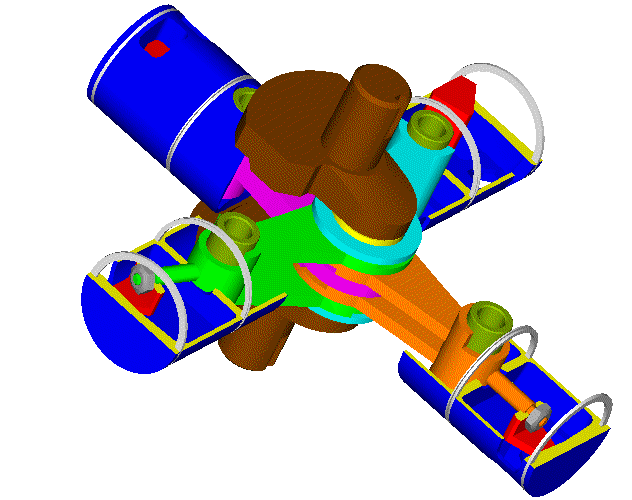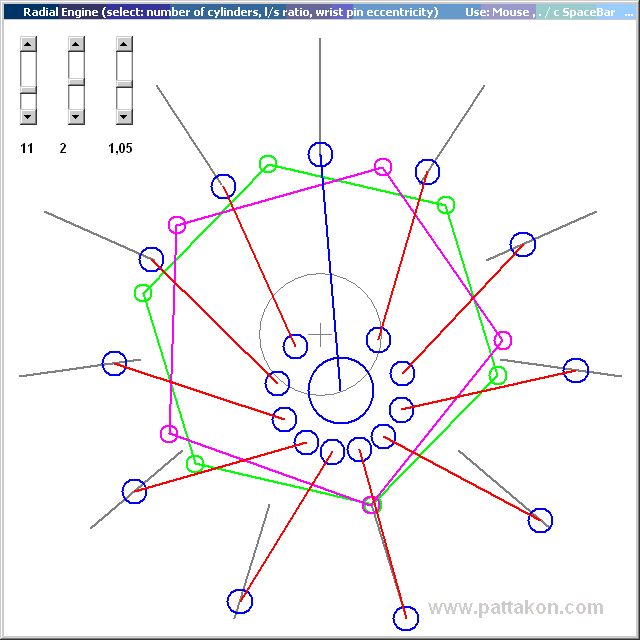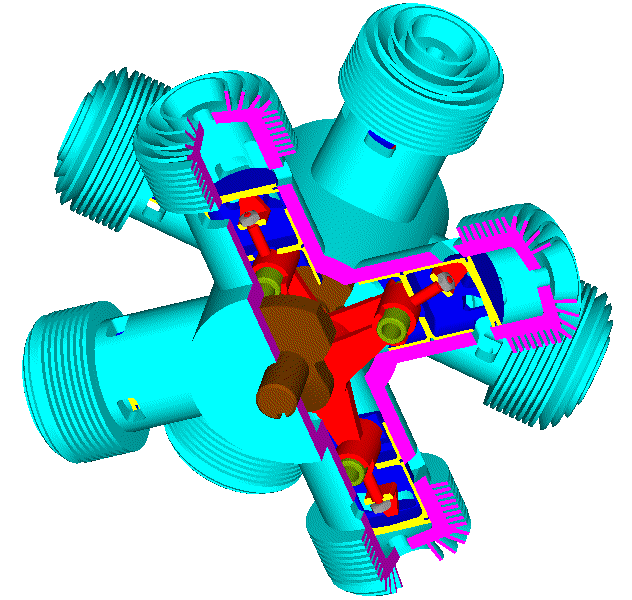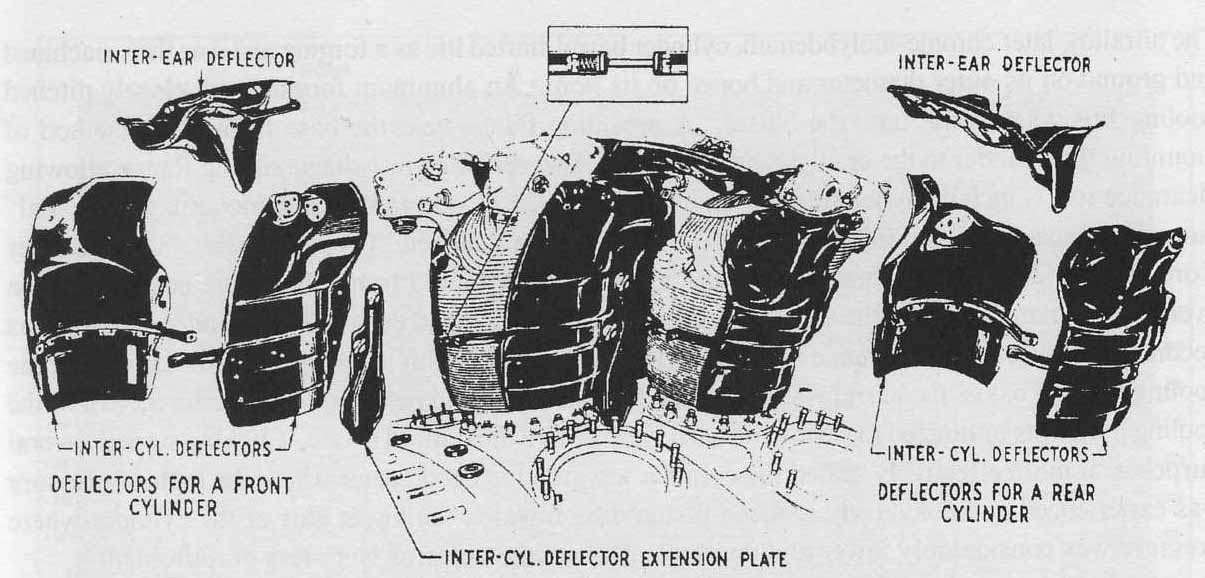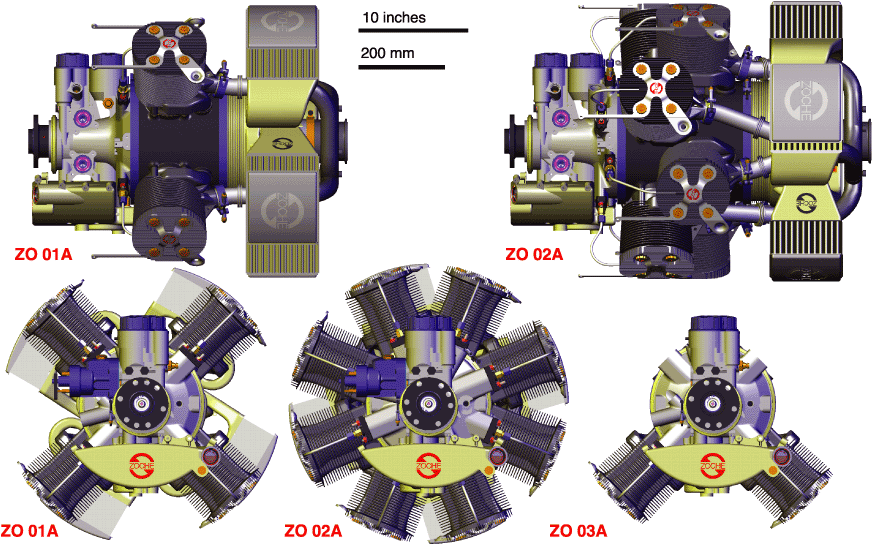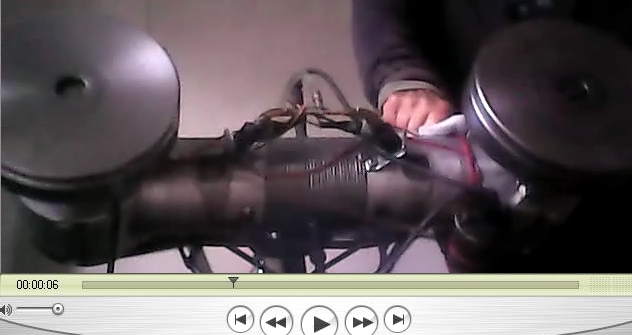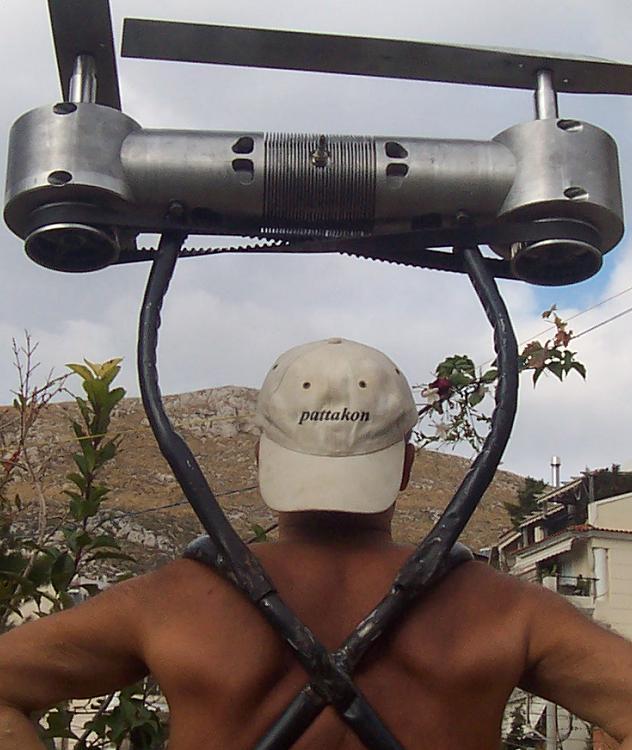Hello Bigleagueslider.
You write:
"OK. Let's compare your Cross Radial PatAT with a pedestrian Lycoming O-360."
In the following is a theoretical comparison of the two engines.
Lycoming O-360, general characteristics
Type: Four-cylinder, dual magneto, horizontally opposed, four-stroke aircraft engine
Bore: 5.125 in (130 mm)
Stroke: 4.375 in (111 mm)
Displacement: 361 cu in (5,916 cc)
Dry weight: 258 lb (117 kg)
Fuel type: 91/96 avgas minimum grade[12]
Oil system: 8 US qt (8 l) dry sump
Cooling system: air-cooled
Power output: 180 hp (134 kW) at 2700 rpm
Compression ratio: 8.5:1

Cooling:
Don’t the front cylinders of the Lycoming hide the rear cylinders from the cool air stream? Reasonably the rear cylinders run hotter.
Isn’t the cooling of the four-cylinder Cross Radial PatAT by far more uniform?
Lightweight:
A turbocharged di Diesel 2,000cc Cross Radial PatAT (the turbocharger is the scavenging pump, too) is several times more lightweight.
Power:
In order the Lycoming to make at 2,700rpm 180bhp, the required torque is: 180 / (2.7*1.4)= 467Nm.
The straight-four 2,000cc turbo-diesel 4-stroke of BMW X3 provides 360Nm of torque from 1500rpm to 2250rpm.
The 2,000cc Cross Radial PatAT is a 2-stroke; 467/360 = 1.3, i.e. the Cross Radial PatAT has to operate at only 65% of the mean effective pressure of the above BMW engine in order to achieve the same power with the 6lit Lycoming engine (direct drive of the same propeller at both cases).
Smoothness and vibrations:
With four 4-stroke cylinders (Lycoming) a power pulse happens every 180 crankshaft degrees.
With four 2-stroke cylinders (single row Cross Radial PatAT) a power pulse happens every 90 crankshaft degrees.
For the same power at the same revs the power pulses of the Lycoming (which load the casing of the airplane) are twice as strong than those of the Cross Radial PatAT.
In the Lycoming there is a significant unbalanced inertia torque on the airplane frame (with the one piston at TDC all the four pistons are stopped, after 90 degrees all the four pistons move with high speed). Pistons of 130mm diameter cannot be lightweight.
In the Lycoming there is also an unbalanced 2nd order moment (rocking couple).
In comparison, the Cross Plane PatAT is fully balanced; taken together with the substantially weaker power pulses of the PatAT (for the same power at the same revs), a more lightweight airplane frame is allowed.
Crankshaft:
The Lycoming crankshaft has four crankpins and only three main bearings.
By the way, when the back cylinder (away from the propeller) is at some 50 crank degrees after combustion, what is the loading of the front crankpin?
Is the case worse or better than the “long” crankpin of the Cross Radial PatAT?
Cost:
From e-bay:

for US2,500$
Complexity:
Too many parts (pushrods, rocker arms, pivots, valve springs, valves, cylinder heads, camshaft).

If you can omit several of them, you avoid the problems they could generate.
Fuel / mileage.
Besides the heavy 6lit Lycoming engine, the airplane has to carry the required fuel. And this fuel is a couple of times more (spark ignition, low compression, old technology) than the Diesel fuel required by a similar power direct injection Diesel for the same range.
Besides the smaller quantity of fuel for a specific range (lower operating cost etc) it is also the safety of the Diesel engine (way less flammable fuel, no high voltage circuit, no need for electric circuit in case of emergency, etc).
It is only a theoretical comparison; however it shows many advantages of the one engine over the other.
Do I miss something?
Thanks
Manolis Pattakos
Edited by manolis, 25 June 2015 - 07:45.



